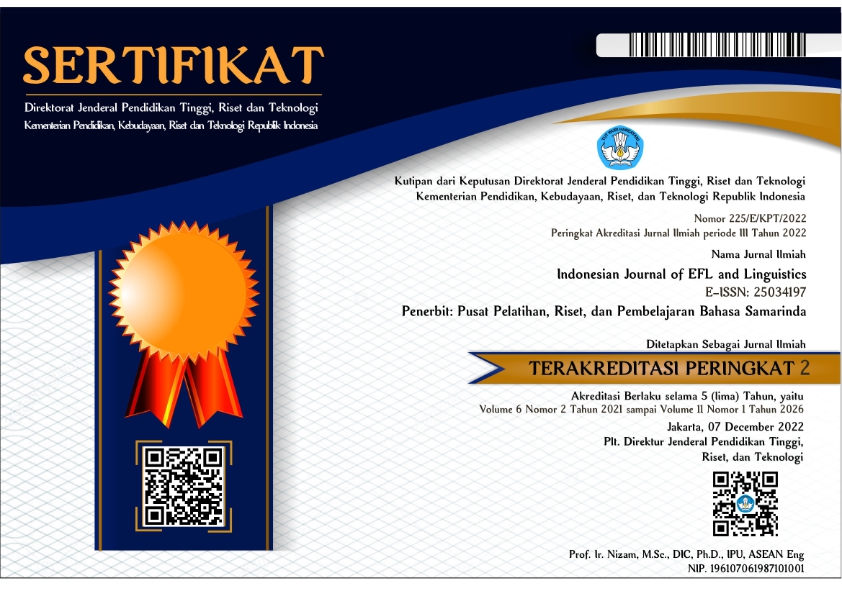Exploring Languages in the Linguistic Landscape of Bandar Grissee
Abstract
This current study investigates the languages used in the linguistic landscape of a heritage tourism place, Bandar Grissee, Gresik, Indonesia. A total of 125 signs were collected through observation and photograph methods. These signs were then analyzed with focusing on the language choices and the strategy of the languages and the information presented in the signages. The results show that the languages used in the linguistic landscape of Bandar Grissee, both in top-down and bottom-up signs, are presented in the same categories: monolingual, bilingual, and multilingual. However, the language choices vary significantly among the signs. The salience of Indonesian and languages related to the cultural and historical values, such as Javanese, Chinese, Arabic, and Dutch, clearly appears in top-down signs, while bottom-up signs predominantly feature English, which is appealing for commercial purposes. The strategy of the languages and information presented in each sign is also different. Top-down signs predominantly use monolingual languages, while bilingual and multilingual signs employ the overlapping and fragmentary strategies. Conversely, bottom-up signs predominantly use bilingual languages with the fragmentary strategy. These results conclude that signmakers have a significant impact on the languages used, both in the language choices and the strategy, in the linguistic landscape of Bandar Grissee to reach their own goals on making the signages. Thus, the linguistic landscape could be a potential tool for the establishment of sustainable tourism and support the Sustainable Development Goals (SDGs) by preserving cultural heritage.
Copyright (c) 2025 Indonesian Journal of EFL and Linguistics

This work is licensed under a Creative Commons Attribution-NonCommercial-ShareAlike 4.0 International License.




